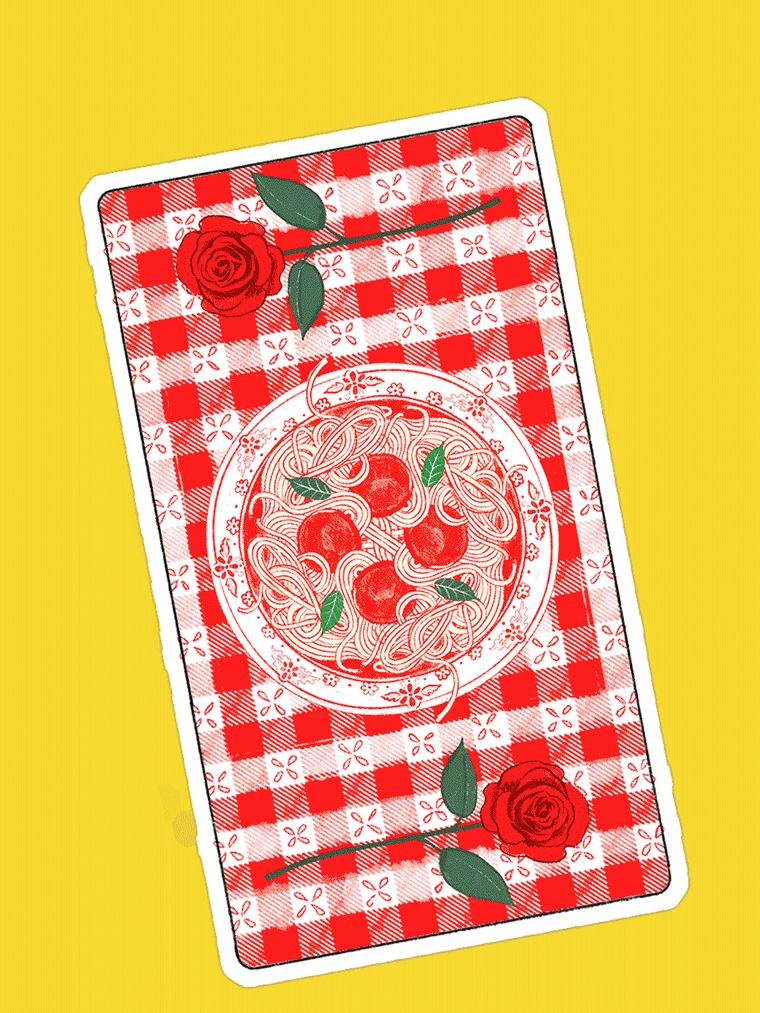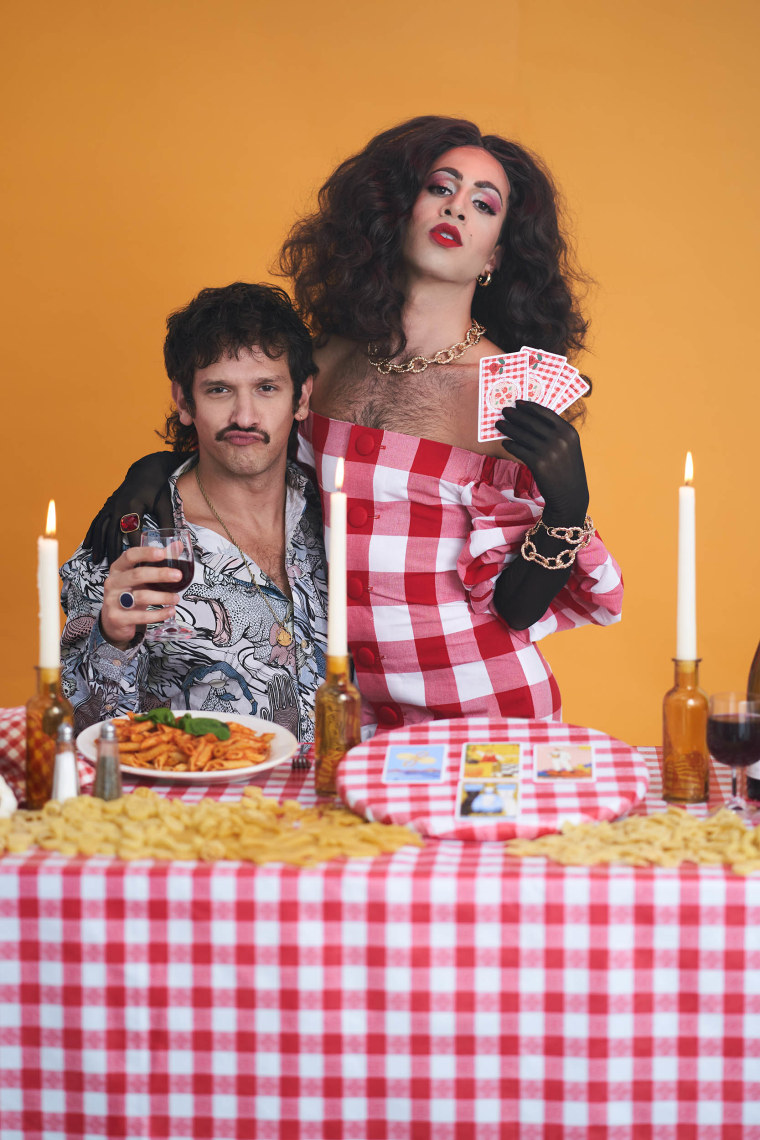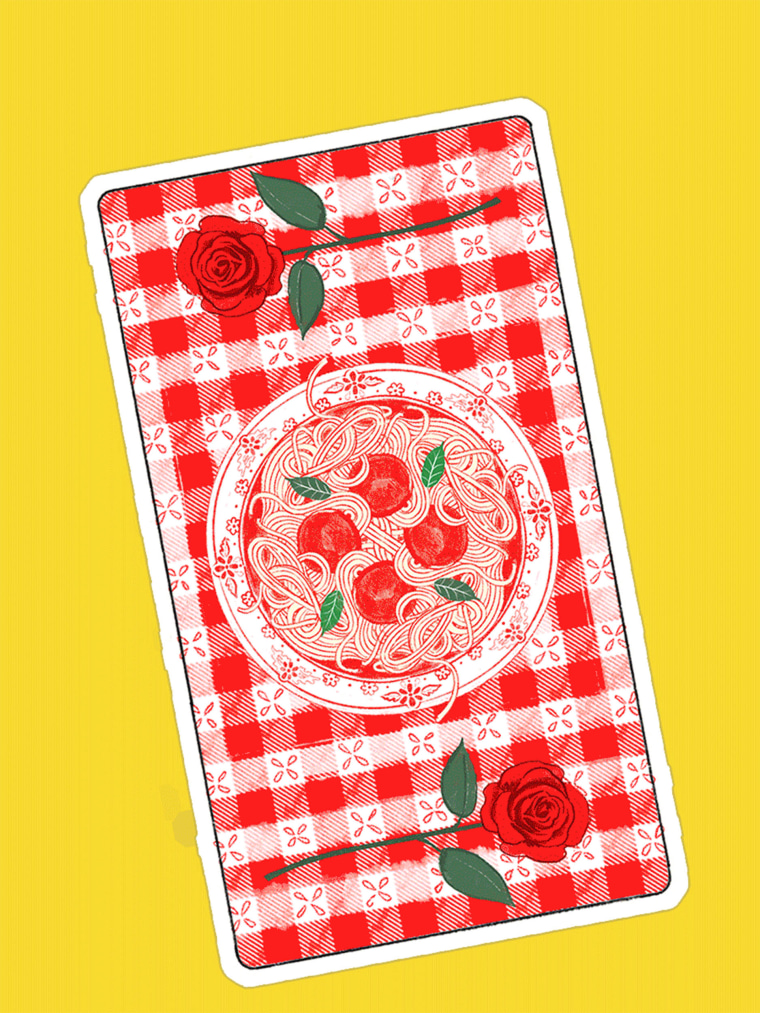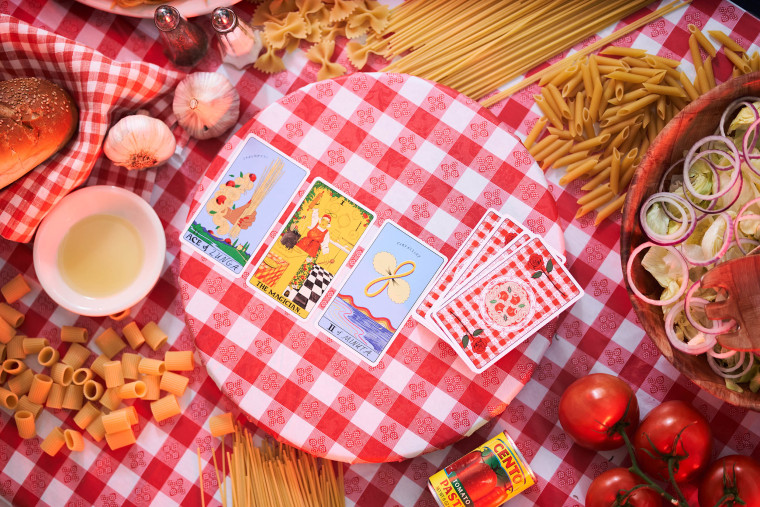What do the cards have in store? In the case of the Pasta Tarot, the answer is, very clearly, carbs.
Created by Rob Truglia and Jeff Petriello, the Pasta Tarot — published by Penguin Random House in 2022 after first being self-published — is a celebration of the beloved primo piatto (the first course of a traditional Italian meal). And with its jubilant and colorful illustrations, the tarot deck is nearly as appetizing as pasta itself.
While classic pasta shapes like spaghetti and rigatoni are of course featured, the deck primarily features deep cuts, surfacing pasta shapes you might not have ever encountered in an American grocery store — like mafalde, sopressini or pansotti.
“Pasta is an analogue for food — and food is beautiful, powerful force of community and shared experience. Growing up, every single event, my grandmother or my aunts — a lot of like unrecognized female labor — was put into creating these beautiful meals that would bring us together. Pasta is a symbol of connection between people. And that is what the tarot is to me as well,” Petriello says.

How the Pasta Tarot was born
Petriello, a game designer, first encountered Truglia through the creator’s “pasta aura” readings. In both in-person and virtual events, Truglia would ask people questions about their personality, survey their style and “tell them what pasta shape they were,” Petriello says.
“You’re rigatoni because everybody likes you. You’re fusilli because you’re kind of crazy. You’re campanelle because you’re elegant and graceful,” he says.
Petriello, who has been reading tarot since he was a teenager, said Truglia “reading metaphysical qualities” into pasta shapes gave him a spark of inspiration.

“If all of these shapes had their own qualities and vibe, that’s just like the tarot cards. They have their own qualities and vibe,” he says.
Petriello approached Truglia for the project, and they collaborated with illustrator Lindsay Mound. “I was the source of knowledge for tarot, he was the source of knowledge for pasta, and our illustrator brought those designs to life,” he says.
The ingredients of the Pasta Tarot
Speaking to TODAY.com, Petriello says assigning a pasta shape to each card was the hardest part.
Tarot decks are traditionally separated into four suits and a trump suit. The Pasta Tarot subdivides types of pasta into each suit.
Cups, the suite of emotion, are ripiena (stuffed pasta). “They’re things to be filled, with our hopes and dreams,” Petriello says.
Swords, the suite of logic, are lunga (long pasta) because it is “long like our thoughts.” Wands are corto (short pasta) because you can “hold them in your hands” like wands.
Pentacles, the earthy suit, is given minuta (tiny pasta). “They felt like little coins in your pocket. You can have a bunch of them and rattle around in the box,” he says.
Each illustration cleverly combines food and intellect, forged through conversation.
For example, Truglia asked Petriello if there was a card that “brings everyone together,” because that’s his meaning for lasagna. Petriello thought of the Three of Cups, his version of the “girl’s night out card.” The result? Three women dancing atop a lasagna.
The Eight of Lunga, or Swords, is a card of self-imposed entrapment. The woman has capellini (angel hair pasta) around her neck — easily broken.
“Every single one of these cards, there is so much packed into each of them that’s actually quite useful for pulling out meaning. We’ve put a lot of care time and thought it is extremely rooted in decks that have come before it,” Petriello says.

A queer, Italian American utopia
Petriello explains that the tarot’s origins go back to Italy, where it was first used as a card game — fitting for a pasta-themed deck.
“Most players of the tarot these days use it as a guide for intuition or a way to connect with their spirituality or just as a reflective tool to ask questions about their own lives or the lives of others.”
With the Pasta Tarot, the co-creators — who are both queer Italian Americans from the tristate area — are adding another layer to the tarot’s long history.

With the illustrations, they found freedom to play with their identity. The deck is teeming with references to Italian and Italian American culture, but with a queer bent. For example, the Hierophant major arcana card has been changed to the Pope; the couple he is blessing is queer.
“When we actually like stepped back and looked at it when it’s finished, we had realized that we had created worlds that we would want to live in. A utopia (without) the prejudice that we face in our own community,” Petriollo says.
Both Petriello and Truglia embedded themselves into the deck. Truglia is the Queen of Corta, where his drag queen persona — Issa Mia Mario — gets the spotlight. Petriello is the King of Corta.
The Ten of Cups, a card of family happiness, is rendered as a joyous beach day, and is from Petriello’s experiences growing up.
“That’s the Cape May Lighthouse, where I grew up going with my family on summer vacation. It’s a testament to my family.”